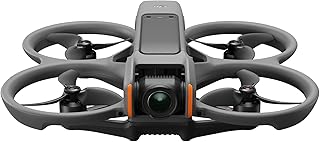DJI Drone Photography Tips: Capture Stunning Aerial Shots
Ready to take your photography to new heights? Here's a comprehensive guide to capturing stunning aerial shots with your DJI drone:
1. Mastering the Basics:
* Understand Your Drone: Familiarize yourself with your DJI drone's controls, features, and limitations. Learn about its flight modes, camera settings, and battery life.
* Fly Safely: Always prioritize safety. Follow local regulations, check no-fly zones, and maintain visual line-of-sight with your drone.
* Practice Makes Perfect: Practice flying and taking photos in a safe and controlled environment before venturing out to more complex locations.
2. Composition & Framing:
* Rule of Thirds: Divide your image into thirds both horizontally and vertically. Place points of interest on the intersections for a visually pleasing composition.
* Leading Lines: Use natural elements like roads, rivers, or fences to guide the viewer's eye through the image.
* Symmetry & Patterns: Look for symmetrical structures, patterns, or repeating elements to create a sense of order and balance.
* Depth & Perspective: Utilize the drone's altitude to create a sense of depth and scale. Capture perspectives that wouldn't be possible from ground level.
3. Lighting & Time of Day:
* Golden Hour (Sunrise & Sunset): Soft, warm light creates a dramatic and picturesque atmosphere.
* Blue Hour (Twilight): The blue hues and long shadows add a unique and moody feel to your photos.
* Overcast Conditions: Diffused light eliminates harsh shadows and provides even illumination, ideal for landscapes and architectural subjects.
* Avoid Direct Sunlight: Strong sunlight can create harsh shadows and washed-out colors.
4. Camera Settings & Techniques:
* Aperture: Use a smaller aperture (higher f-stop number) for greater depth of field, ensuring both foreground and background are in focus.
* Shutter Speed: Utilize a faster shutter speed (1/1000 sec or higher) to freeze motion, especially when capturing moving subjects.
* ISO: Keep ISO as low as possible to reduce noise and maintain image quality.
* RAW Format: Capture images in RAW format for maximum flexibility in post-processing.
* Bracketing: Take multiple photos with varying exposures for greater control over the final image.
* Panoramas: Combine multiple photos to create stunning panoramic landscapes.
5. Subject Choice & Inspiration:
* Landscapes: Showcase the vastness and beauty of nature with sweeping aerial views.
* Cities: Capture iconic landmarks, bustling streets, and unique architectural designs.
* Water Features: Emphasize the movement and color of rivers, lakes, and oceans.
* Wildlife & Nature: Observe and photograph animals from a safe distance, respecting their habitat.
* Abstract & Geometric Shapes: Look for interesting patterns and shapes from above, such as agricultural fields, urban landscapes, or natural formations.
6. Post-Processing:
* Enhancement: Adjust brightness, contrast, highlights, and shadows to fine-tune the image.
* Color Correction: Use tools to adjust color balance, saturation, and vibrancy.
* Cropping & Resizing: Adjust the composition and resize images for specific uses.
* Sharpening & Noise Reduction: Improve image clarity and reduce noise for a cleaner final image.
7. Additional Tips:
* Plan Your Flights: Use online tools and apps to plan your flight paths, check weather conditions, and identify potential hazards.
* Invest in Accessories: Consider purchasing filters, a gimbal, a backpack, or a landing pad for enhanced capabilities.
* Experiment & Explore: Don't be afraid to try new things and explore different angles and perspectives.
* Share & Inspire: Share your stunning aerial photos with others to inspire and connect with fellow photographers.
By following these tips and constantly exploring new possibilities, you can capture breathtaking aerial shots that truly showcase the beauty of our world from a unique perspective. Remember, safety comes first, and enjoy the process of capturing these stunning images!


